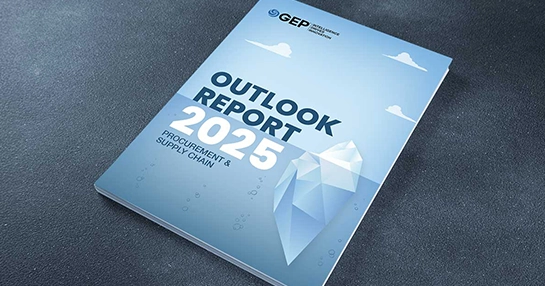
Agentic AI Makes Sourcing Smarter, Faster, and Scalable
- Agentic AI turns sourcing into a continuous, adaptive system.
- Autonomous sourcing unlocks speed, resilience, and scale.
- AI agents amplify human decisions to deliver exponential value.
October 07, 2025 | Procurement Strategy 6 minutes read
Procurement has always been about making better decisions faster. Today, those decisions depend on far more data, more stakeholders, and more risks than a single team can hold in their heads.
That is why agentic AI in autonomous sourcing matters: it takes routine, repeatable sourcing work and makes it continuous, measurable, and safe to act on at scale. Below we’ll walk through how it works, what it changes about sourcing day to day, and how to think about putting it into practice on modern e-procurement platforms.
How Agentic AI Really Works in Autonomous Sourcing
At its core, agentic AI is not one clever model running on a schedule. It is a collection of focused, cooperating agents plugged into live data and enterprise systems. Each agent has a role, a set of data sources it trusts, and a set of actions it can request. Together they create a sourcing system that senses changes, reasons about tradeoffs, and takes or recommends steps with human oversight where needed.
Agent Networks, Not Linear Workflows
Think of classical sourcing software as a conveyor belt, where work moves from RFP creation to evaluation to award. Agentic AI replaces that belt with a team of specialists that work in parallel and consult each other as conditions change. Typical agent roles include:
- Market monitoring agent, constantly tracking pricing, commodity moves, and supplier news.
- Supplier risk agent, evaluating financial health, compliance issues, and on-time performance.
- Category strategy agent, weighing total cost of ownership, service, and strategic fit.
- Negotiation agent, simulating tactics, preparing offers, and drafting messages.
- Execution agent, which triggers system actions like issuing RFPs or updating contracts.
Because these agents run concurrently, they catch cross-cutting signals faster. For example, a market monitoring agent can flag sudden input-cost inflation, the risk agent can mark several suppliers as vulnerable, and the negotiation agent can automatically widen the bid pool within policy. That coordination reduces blind spots and keeps sourcing adaptive rather than batch-driven.
Deep LLM Integration
Large language models let procurement systems read things humans read but at machine speed. Contracts, supplier questionnaires, analyst reports, news alerts, and email threads are full of value if you can extract it reliably. LLMs do that by:
- Turning unstructured text into structured facts and obligations.
- Summarizing long documents into decision-ready briefs.
- Drafting negotiation options in the brand voice and format you require.
- Powering conversational assistants for category teams and suppliers.
Good deployments use retrieval-augmented approaches, where an LLM is grounded in verified enterprise data so it does not invent facts. In a platform like GEP Smart, that means the model answers from the central source of truth for spend, contracts, and supplier profiles, not from public web memory. The result is speed plus accuracy, where people get readable, auditable outputs every time.
Embedded Tools and APIs: Acting on the World
A smart agent that only reports is useful. An agent that can act is transformative. Embedded tools and APIs are the hands of the system. They let agents do things such as:
- Pull live spend and PO history from ERP.
- Launch an RFP with pre-populated scope and evaluation criteria.
- Trigger supplier onboarding checks or audits.
- Create or update contract clauses in the contract lifecycle system.
- Raise exception requests and route approvals to the right stakeholders.
Practical implementations use role-based permissions and transaction logs, so every automated action has an owner, an approval trail, and a rollback path. A safe rollout pattern is action in monitor mode first, then recommend-with-approval, then limited automated execution for low-risk categories. That keeps human governance central while unlocking operational speed.
Human-in-the-Loop Oversight
Agentic AI is not about removing people. It is about shifting people from repetitive tasks to judgment tasks. Human oversight is essential for fairness, compliance, and business alignment. Key governance practices include:
- Configurable autonomy levels per category and per supplier.
- Clear approval gates for high-dollar or strategic awards.
- Explainable decision logs that show why agents chose a supplier or a negotiation play.
- A simulation sandbox for reviewing agent behavior under hypothetical scenarios.
- Ongoing monitoring of agent accuracy and periodic retraining based on outcomes.
A recommended rollout is phased. Start with agents that handle repetitive, low-risk actions such as tail spend consolidation. Next, add agents that support category managers with decision briefs and negotiation playbooks. Later, expand into broader autonomy for routine execution where confidence and controls are high.
Ready to leverage agentic AI in procurement?
Get The Agentic AI Playbook to see how leaders are moving from automation to autonomy
Why Autonomous Sourcing Creates Exponential Value
Autonomous sourcing compounds value because it converts episodic work into continuous capability. Here is how that plays out in business terms and aligns it to GEP-style platform thinking.
Continuous market capture
Agents monitor prices and supplier signals 24/7, so windows of opportunity are not missed between quarterly sourcing cycles.
Faster cycle times
Routine steps that once took days can be completed in hours, freeing teams to focus on strategy.
Better risk management
Agents surface early risk signals and automate mitigations before disruptions cascade.
Higher price realization
Dynamic negotiation agents test tactics and capture better terms over time, because they learn from every interaction.
Scale without linear headcount growth
A network of agents lets a single category lead manage more categories effectively, using automation to handle routine work.
To turn those outcomes into measurable ROI, start with three pillars: baseline measurement, a focused pilot, and scale with governance. Baseline what your current cycle times, maverick spend, and supplier performance look like. Run a pilot on a category with clear data and volume, measure uplift against control groups, and then expand autonomy into adjacent categories while tightening controls. Platforms that centralize data, such as GEP Smart, make that loop far simpler because agents are working from a single, authoritative dataset.
Make Sourcing a Continuous Capability
Agentic AI represents a real change in how sourcing works. It turns sourcing from a periodic program into a continuous, adaptive capability that can act with speed and discipline. For procurement leaders who want to scale impact without sacrificing control, the question is not if you will use agentic AI, but how you make it safe, auditable, and aligned to strategy. The right platform will centralize your data, expose secure APIs, and provide the governance layers you need so agents are helpers, not hazards.
If you want to see how this looks in practice, explore GEP’s AI-powered sourcing capabilities.
FAQs
How can Agentic AI enhance sourcing and supplier management processes to drive measurable ROI?
Agentic AI automates routine work, continuously finds and triages sourcing opportunities, and enforces policy consistently. That reduces cycle times and manual errors, which in turn lowers cost to serve. It also increases contract capture and improves supplier performance monitoring, which together create measurable savings and reduce disruption costs.
How does Agentic AI support dynamic negotiation strategies and real-time decision-making?
Negotiation agents run scenario simulations, test tradeoffs among price, lead time, and service levels, and generate recommended offers. They can react to supplier counter-offers in near real time, subject to configured guardrails. That agility converts market movements into tactical advantage.
How does Agentic AI handle unstructured data and integrate it into procurement processes?
LLMs and retrieval systems extract obligations, dates, SLAs, and risk indicators from contracts, emails, and reports. That structured output feeds scoring, alerts, and negotiation inputs. When integrated with enterprise systems through secure APIs, those insights become operational actions, not static notes.
How does Agentic AI scale to handle the complexities of global supply chains?
Scale comes from two places. First, agent networks operate in parallel across categories and geographies. Second, a central platform provides normalized spend, contract, and supplier data so each agent works from a consistent source of truth. Together those elements let you manage many more sourcing events and suppliers without a linear increase in headcount.
Can Agentic AI autonomously monitor supplier performance and manage risks post-award?
Yes. Post-award agents continuously track KPIs, compliance data, and external signals such as news and financial filings. When thresholds are breached, they can issue warnings, open corrective action workflows, or escalate to human owners. This continuous posture keeps agreements on track and reduces surprise events.



